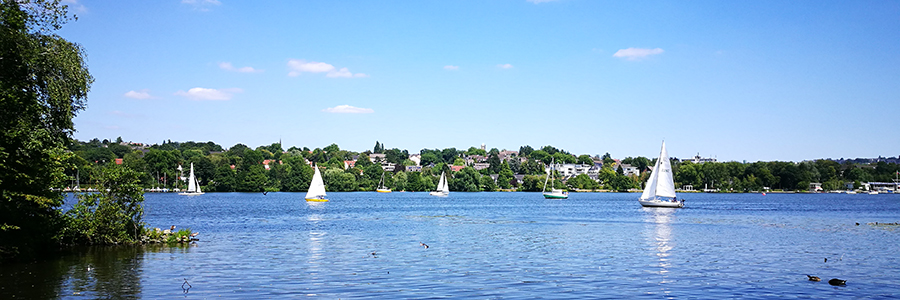Discover North Rhine-Westphalia - the new "green" pot
 With around 17.9 million inhabitants, North Rhine-Westphalia is the most populous federal state in Germany and the fourth largest in terms of area at around 34,100 square kilometers. 30 of the 81 major German cities are in its heavily urbanized area.
With around 17.9 million inhabitants, North Rhine-Westphalia is the most populous federal state in Germany and the fourth largest in terms of area at around 34,100 square kilometers. 30 of the 81 major German cities are in its heavily urbanized area.
The northern part of the Rhine-Ruhr conurbation is formed by the heavily urbanized Ruhr area with the centres of Dortmund, Essen, Duisburg and Bochum. Its economic rise in the early 19th century was based on industrialization and the mining industry, particularly ore and coal mining.
The Route of Industrial Culture is a tourist themed route that leads to the most important industrial-historical sites in the Ruhr area and serves as a starting point for marketing the Ruhr area as a tourist region.
There are numerous technology and industrial museums in the Ruhr area, such as the German Mining Museum in Bochum, the Museum of German Inland Shipping in Duisburg, the Recklinghausen substation, the DASA – working world exhibition and the Hoesch Museum in Dortmund, and the Bochum-Dahlhausen Railway Museum in Bochum and the decentralized museums Westphalian Industrial Museum and Rhenish Industrial Museum. There are also several art museums in the Ruhr area, such as the Museum Folkwang in Essen, the Lehmbruck Museum and Museum Küppersmühle in Duisburg, the Ludwig Gallery in Oberhausen Castle, the Karl Ernst Osthaus Museum in Hagen and the Museum Ostwall in Dortmund. With the opening of the Capital of Culture in 2010, the Ruhrlandmuseum was reopened as the Ruhr Museum in the former coal washing plant of the Zollverein colliery. The Zollverein colliery and coking plant in Essen was declared a World Heritage Site by UNESCO in 2001. In 2010, Essen represented the European Capital of Culture region.
Es gibt keine Beiträge in dieser Kategorie. Wenn Unterkategorien angezeigt werden, können diese aber Beiträge enthalten.